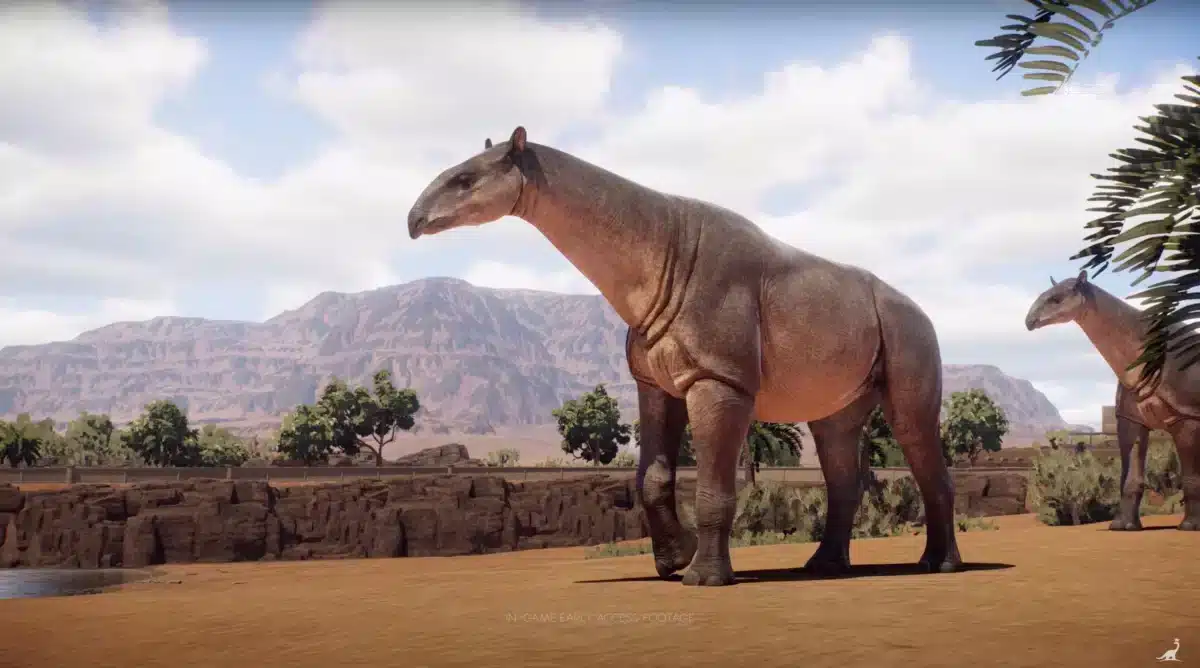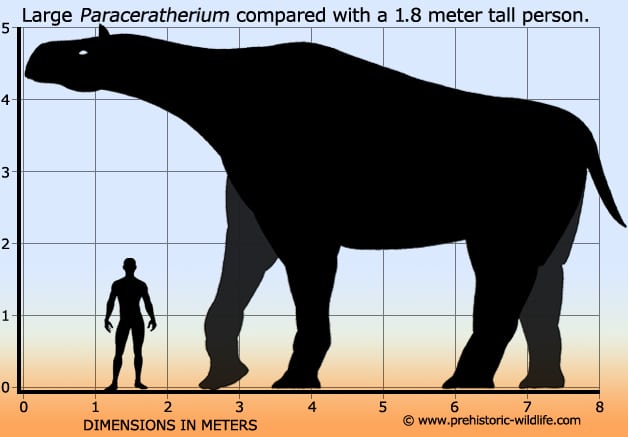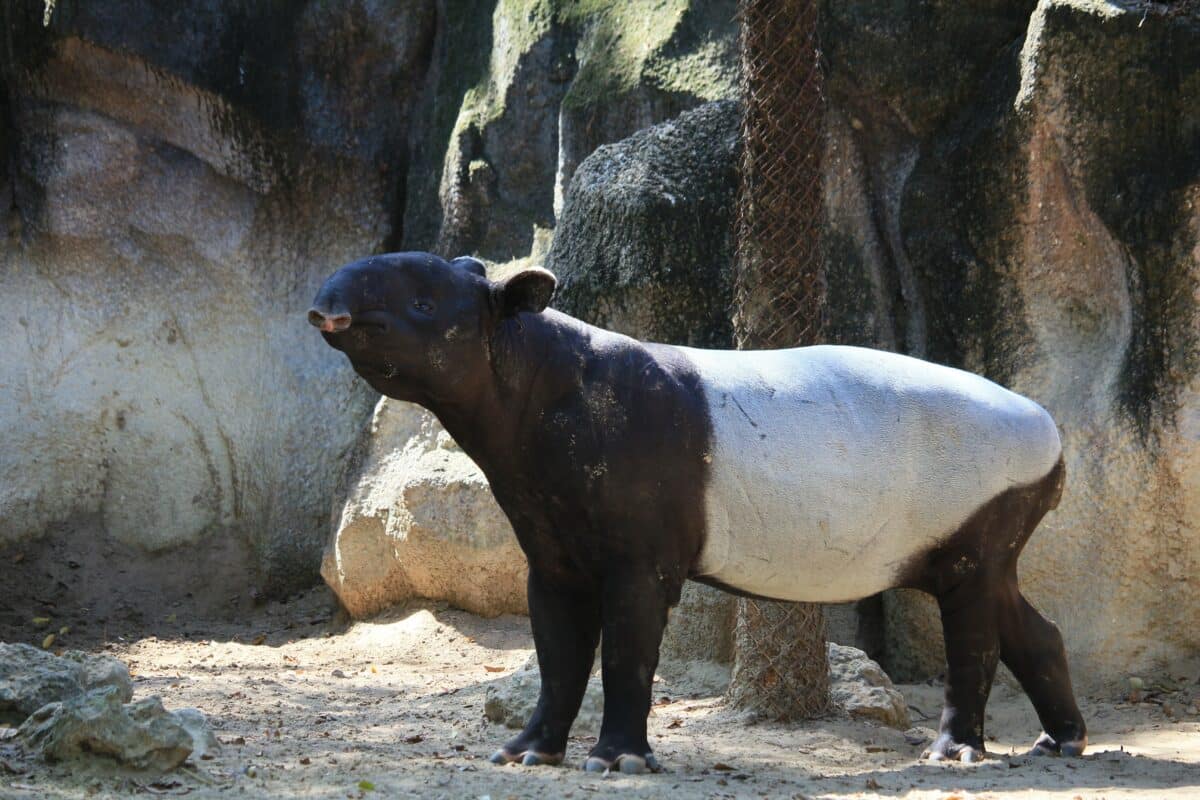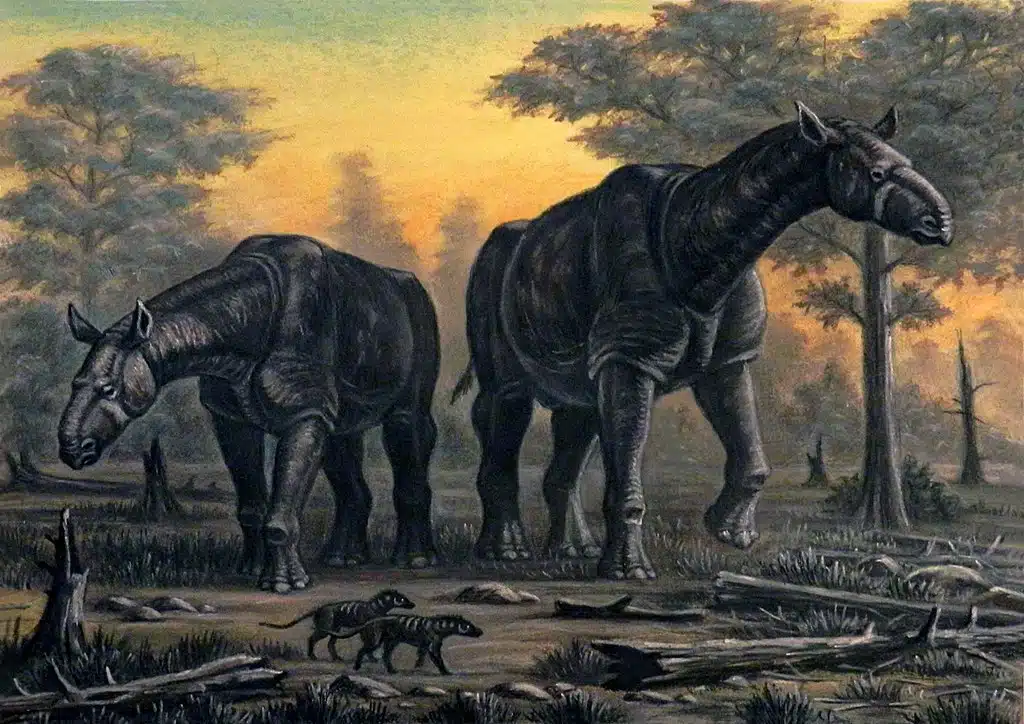Get ready to meet the largest and most awe-inspiring mammal to ever roam the earth. This incredible animal has captivated people’s hearts and minds for centuries thanks to its massive size, unique physical characteristics, and cultural significance. Introducing the largest land mammal: the Paraceratherium.

Join us as we delve into the world of this majestic animal and discover fascinating facts about its habitat, diet, behavior, and anatomy. But that’s not all – we’ll also explore its historical and cultural significance, examining its use in human societies and its symbolic meaning.
Take advantage of this exciting journey – come along for the ride and experience the wonder of the world’s largest land animal ever recorded for yourself. Buckle up, hold tight, and prepare for an unforgettable adventure!
The Paraceratherium – A Beast of Mythic Proportions
The Paraceratherium, also known as Indricotherium, is an extinct genus of giant rhinoceros that lived approximately 34 to 23 million years ago during the Oligocene and Miocene epochs. It is considered one of the largest land mammals ever to have lived, with a height of up to 18 feet (5.5 meters) at the shoulder and a weight of up to 20 tons.
The Paraceratherium had a long, giraffe-like neck and a relatively small head compared to its massive body. It had four sturdy legs and is believed to have been a herbivore, feeding on leaves and shoots from trees. Its teeth were adapted for grinding rigid plant material.
Fossils of the Paraceratherium come from Asia, particularly in what is now Kazakhstan, Pakistan, and China. The first discovery of the animal remains unsurfaced in the late 19th century, and it was initially thought to be an enormous species of dinosaur.
Today, the Paraceratherium is considered a distant relative of the modern rhinoceros. Still, it represents a unique family tree branch that went extinct millions of years ago. It is also a fascinating example of the incredible diversity of life that existed in the distant past.
Paraceratherium in Comparison

To grasp the immense size of the Paraceratherium, we can compare it to other large land animals.
For instance, the African elephant, the largest living land animal, typically weighs around 6 tons and stands up to 13 feet tall. This means the Paraceratherium was three times heavier and five feet taller than an elephant – a staggering difference.
But the Paraceratherium wasn’t just more significant than any living land animal – it also surpassed every known extinct land animal, including ancient behemoths such as the diplodocus and the triceratops. Its size was truly unparalleled in the animal kingdom.
Cultural Significance
The Paraceratherium has long been a mighty symbol throughout history. In ancient Persia, the animal was frequently depicted in art and carvings to represent the king’s strength and prowess.
Even in modern times, the Paraceratherium is a mascot for sports teams and companies, highlighting its enduring cultural significance.
However, the animal’s importance goes beyond mere symbolism. Its bones have been uncovered in ancient Chinese medicine shops, suggesting that it has healing purposes.
Today, the Paraceratherium remains a crucial part of the fossil record, offering invaluable insights into the evolution and ecology of prehistoric mammals. Its legacy lives on, reminding us of the incredible diversity of life on our planet over millions of years.
Conservation Status
Regrettably, the Paraceratherium is now extinct, succumbing to the challenges posed by changing environmental conditions and predators. Sadly, this is a fate by many other extinct animals.
Nonetheless, the Paraceratherium is a poignant reminder of the critical need for conservation efforts. By prioritizing protecting and preserving endangered species, we can prevent them from suffering the same fate as this majestic creature. It is our responsibility to ensure that future generations can appreciate and cherish the remarkable biodiversity of our planet.
The Closest Living Relative to Paraceratherium

Despite having gone extinct millions of years ago, the Paraceratherium still has living relatives that exist today.
Rhinos and tapirs are the closest living relatives of the Paraceratherium, as they all belong to the same group of mammals known as Perissodactyla.
Although rhinos and tapirs are notably smaller than their prehistoric ancestor, they share some distinctive characteristics, such as their herbivorous diets, large size, and unique body structures.
The Bottomline
In conclusion, the Paraceratherium was a remarkable animal that captivates the imagination with its incredible size, physical features, and cultural significance.
Its legacy remains an essential part of the fossil record. Providing valuable insights into the evolution and ecology of prehistoric mammals.
However, its extinction serves as a poignant reminder of the critical need for conservation efforts to protect and preserve endangered species.
Despite being gone for millions of years, the Paraceratherium still has relatives today, this underscores the fascinating diversity of life on our planet. The journey to discover and appreciate the wonder of this majestic creature is truly an unforgettable adventure.
Thank you for following along with this article!
Next up in the animal news world:
- Lord of the Rings Inspires New Butterfly Genus Named “Saurona”
- The Record-Breaking Size of the Largest Orca Whale
- Meet Frosty: The Leucistic Orca Calf
- The Largest Whale Shark Ever Recorded – 47,000 Pounds
- The Tail of the “Man-Eater of Mfuwe”
- Mass Deaths of Dolphins in the Black Sea Linked to the Russians
- Pregnant Hammerhead Shark Washes Ashore in Alabama
- 2,000 Endangered Rhinos to the Highest Bidder
- Crocodile Snatch Cheetah by Water Hole - April 16, 2024
- Cows Jump from Boat and Goes Swimming - April 16, 2024
- Leopard Catches Domestic Dog - April 16, 2024




